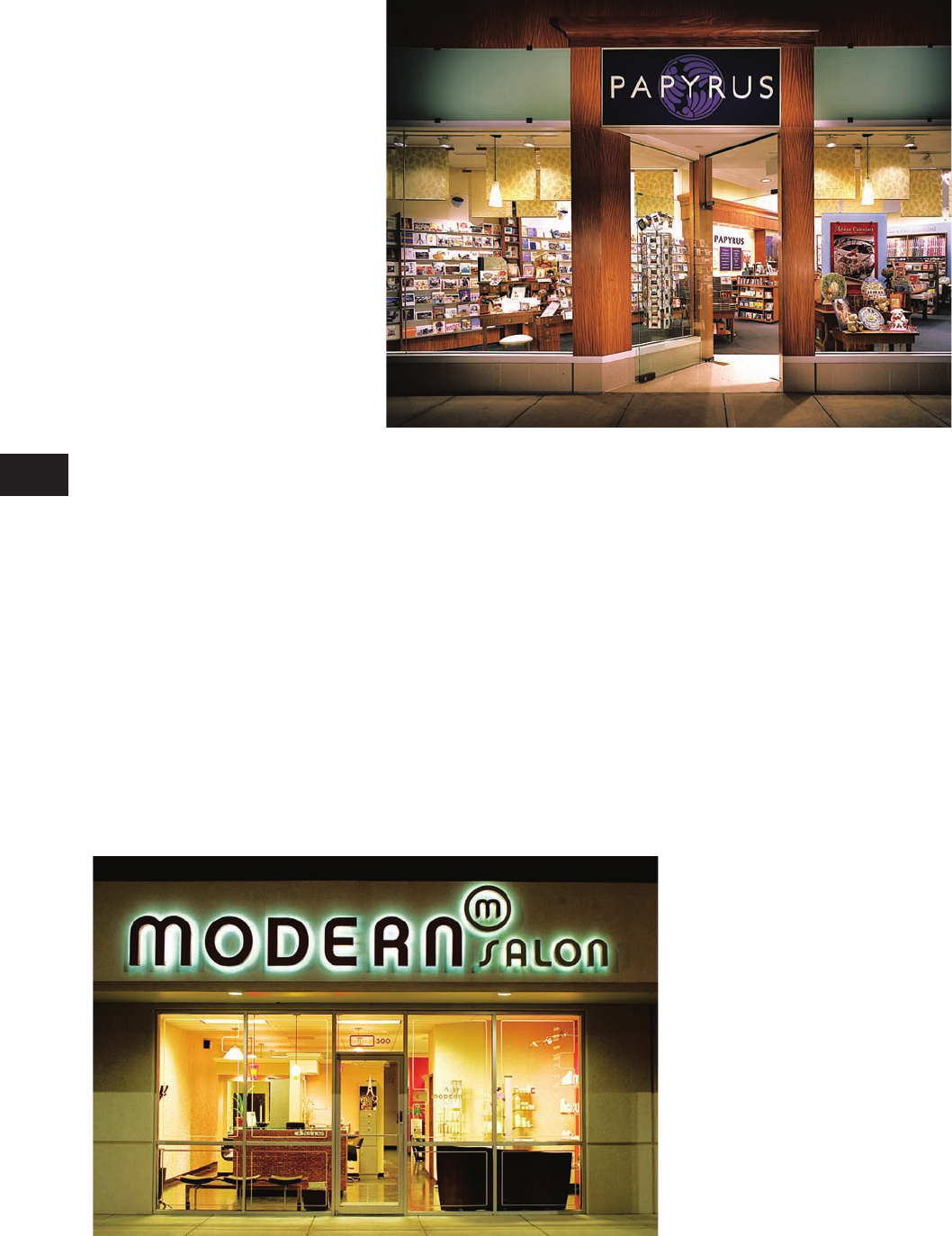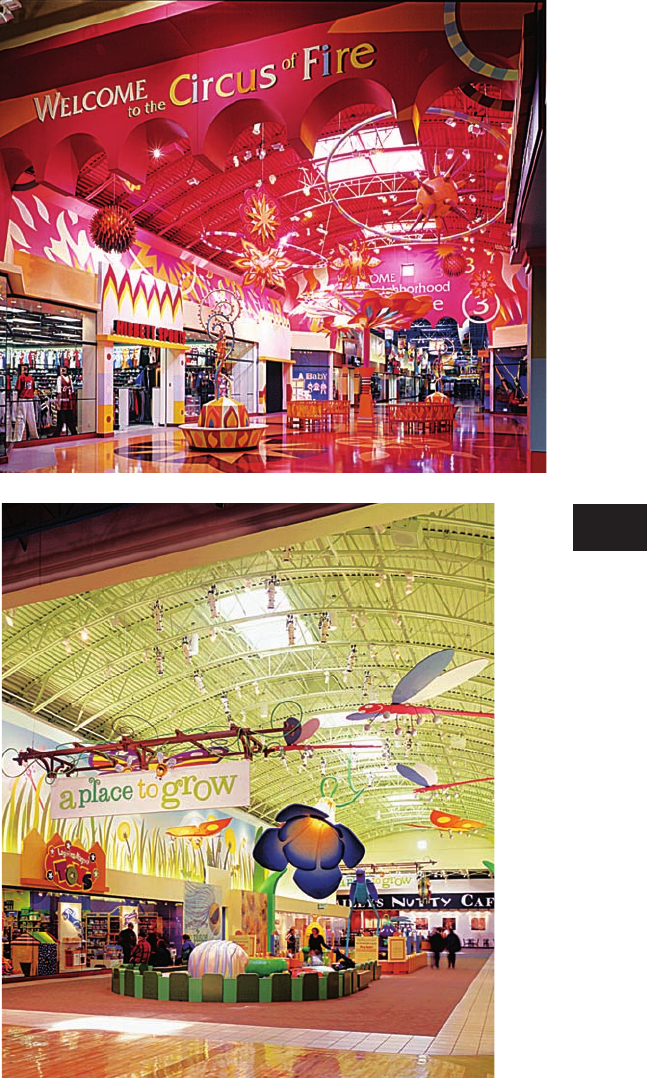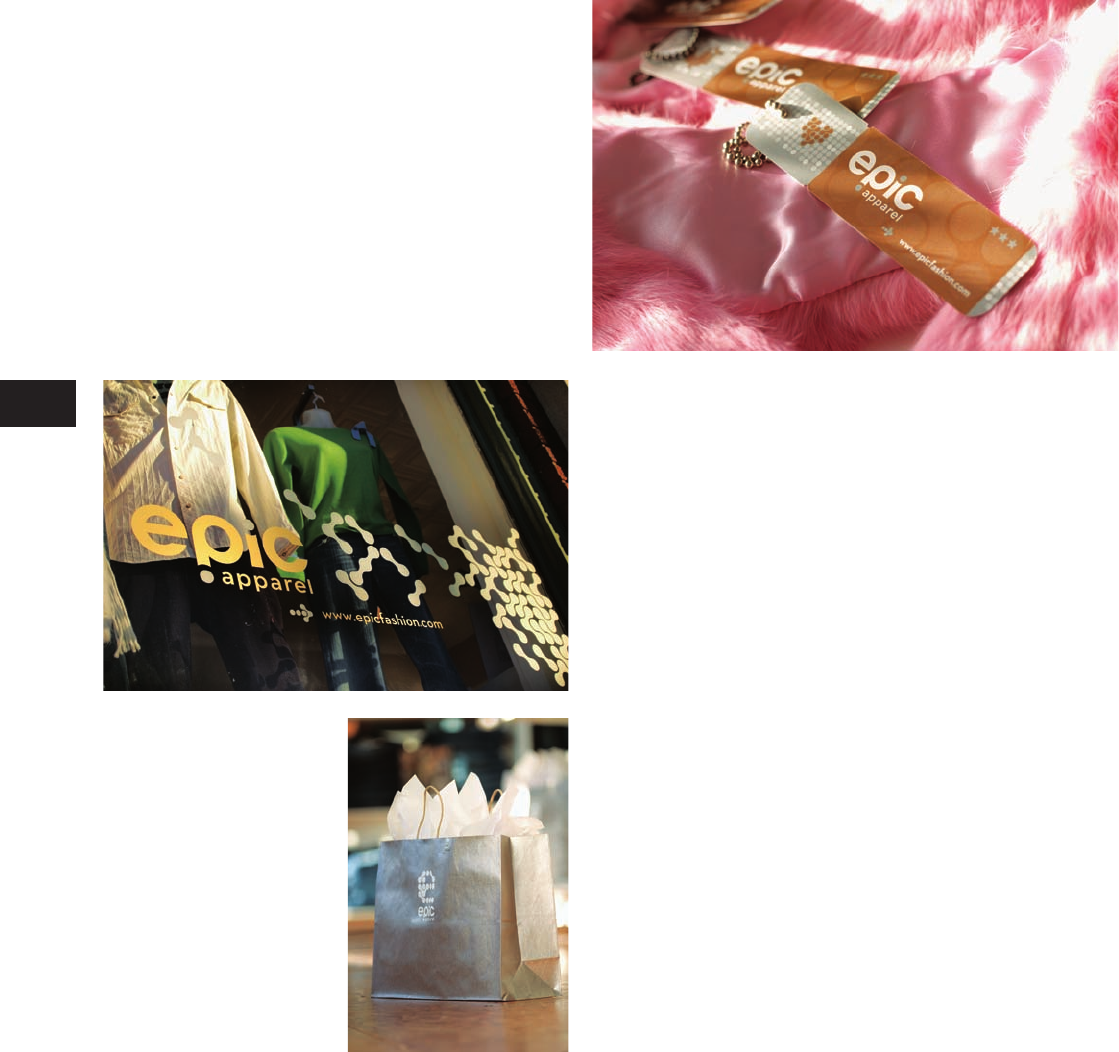
The Complete Graphic Designer
168
Branding has evolved from focus-
ing on the actual products or
services to taking an important
role in the entire consumer experi-
ence. Whereas fi fty years ago most
consumer products were marketed
and sold through catalogs, door-to-
door salespeople, or through other
distribution channels, today most
brands are sold in company-owned
and operated retail environments.
This allows companies to control
every aspect of a customer’s shop-
ping experience from product
placement on store shelves and
lighting to having the ability to test
Branding in the
Retail Environment
products on shoppers. Even the
way sales people are dressed and
the manner in which they greet
people are tightly controlled and
an essential part of the branded
retail environment.
There are many aspects to the retail
environment that must be consid-
ered when designing a consumer
experience. Every item in the store,
from the window displays and
signage to product labeling, must all
be consistent in their mood, tone,
and delivery of the brand promise,
including the following:
Exterior signage that illuminates
at night must be easy to read from
afar. Backlit channel letters are
used to cast a glow around the
silhouetted letterforms.
Design: Gardner Design
Papyrus is a store found in enclosed
retail malls that specializes in
distinctive stationery and paper
products. Wood paneling used
throughout the environment is
reminiscent of a library and refers
to the paper products themselves.
Design: Kiku Obata
TB
Provision-Complete Graphic Designer
CD109-59/4028
1st
proof
CGD p144-192_Text file_.indd 168CGD p144-192_Text file_.indd 168 1/20/09 3:24:41 PM1/20/09 3:24:41 PM

Branding
169
Branding in the retail environment extends to the shopping
centers and malls that stores occupy. To elevate the quality
of a customer’s experience while shopping, malls often
create themes for various parts of the building such as
indoor playgrounds and different wings. In each of these
examples, lighting, graphics, and molded sculptures all
work to create a branded retail experience.
Design: Kiku Obata
1. Exterior Signage
Exterior signage appearing on the outside
of a retail environment should be visible
from several hundred feet away and, if open
at night, lit up either through the use of
channel letter lighting or illuminated light
boxes. Stores that are free-standing struc-
tures may need to adhere to local build-
ing codes in terms of size restrictions and
lighting regulations. If a retail location is in
an enclosed mall or shopping center, signs
will usually need to be smaller and have to
adhere to the property specifi cations.
2. Interior Signage
Interior signage is used to guide the con-
sumer through the store to fi nd what they
are looking for. Sometimes vinyl decals
are placed onto windows to identify the
store. Much like wayfi nding, signs must be
easy to read and comprehend. Where is
the customer supposed to place an order,
pick up an order, or ask for help?
TB
Provision-Complete Graphic Designer
CD109-59/4028
1st
proof
CGD p144-192_Text file_.indd 169CGD p144-192_Text file_.indd 169 1/20/09 3:24:42 PM1/20/09 3:24:42 PM

The Complete Graphic Designer
170
3. P.O.P. displays
P.O.P. (point of purchase) displays call attention to
specifi c products within a store. They are usually
placed in high-traffi c areas for maximum exposure. In
a crowded retail environment in which all other prime
shelf locations are spoken for, P.O.P. displays offer
extraordinary visibility. Sometimes these are “bargain
bins” for sale or clearance items. They may be con-
structed of laminated cardboard or other raw materi-
als such as wood or metal.
4. Merchandise labels
Merchandise labels identify the product being sold and
its attributes such as size, style, fl avor, or scent. Usually
implemented in the form of a hangtag or sticker placed
onto products, labels contain a UPC bar code for scan-
ning at the register and inventory control.
5. Marketing collateral
Marketing collateral is typically located throughout a
retail store to promote the brand. Product brochures,
advertising displays, credit card applications, post-
cards, and coupons are all part of a brand’s identity
and will reinforce a customer’s experience.
This clean, modern design for an
apparel store is a good example
of a branding campaign that has
achieved a fl exible system that
is undeniably consistent. The
window display, hangtags, and
shopping bags are each striking
designs on their own and convey
the brand message in a simple
and elegant manner.
Design: Gardner Design
TB
Provision-Complete Graphic Designer
CD109-59/4028
1st
proof
CGD p144-192_Text file_.indd 170CGD p144-192_Text file_.indd 170 1/20/09 3:24:43 PM1/20/09 3:24:43 PM
Get The Complete Graphic Designer now with the O’Reilly learning platform.
O’Reilly members experience books, live events, courses curated by job role, and more from O’Reilly and nearly 200 top publishers.

